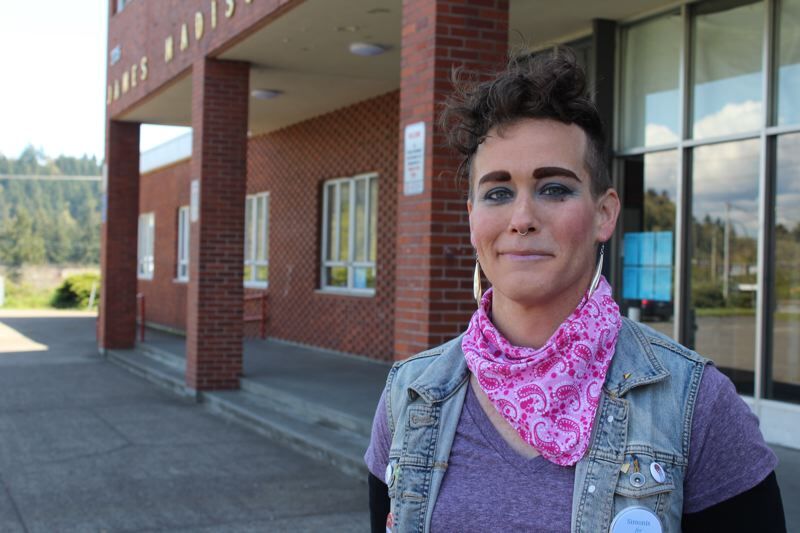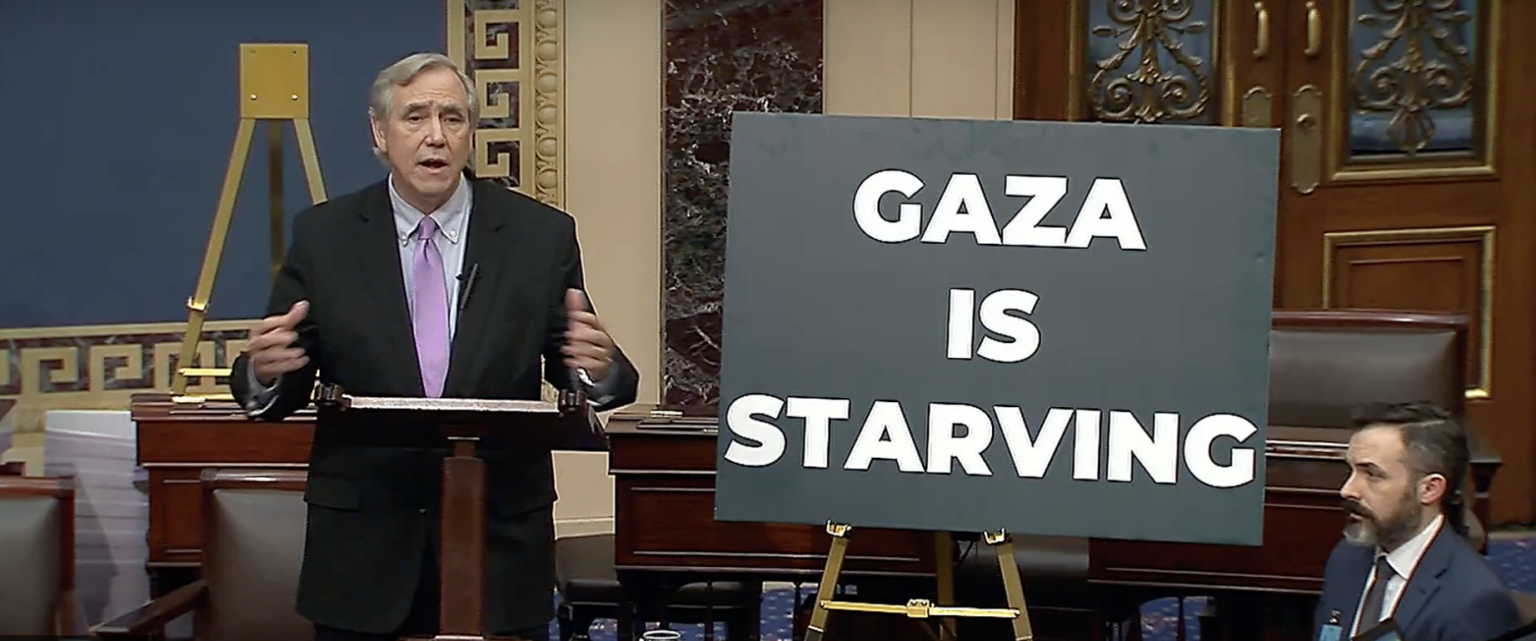We asked PPS candidates to take us to places that show why they’re running
Published 12:00 am Tuesday, April 25, 2017

- Joseph "Josie" Simonis, an environmental consultant who's running for the Portland School Board from Zone 6, in front of Madison High School. Simonis says Madison represents the inequities and the opportunities in the district. 'We have really good people doing really good work who need structural help," Simonis says.
Trending
Portland Public Schools is in transition—again.
As students and teachers prepare to welcome new superintendent Donyall Dickey from Atlanta this summer, three out of seven seats on the Portland Public Schools Board are up for grabs. No incumbent is running for re-election, and none of the other four remaining board members has served for more than two years.
On May 16, voters will decide who among the 11 candidates for the school board to add to this mix. To help inform their decisions, the Portland Tribune asked the top two candidates in each of the three races to take us to places that illustrate why they’re running.
Trending
Here are their answers. Although candidates for the Portland Public Schools board must come from certain zones in the district to run, voters districtwide cast ballots in all of the zones.
Zone 4-North and parts of Northeast Portland
Candidate: Rita Moore
Place that illustrates why she’s running: Ockley Green Middle School
Day job: policy analyst with the Oregon Health Authority (until her contract ended March 31)
Educational background: PhD in political science from Columbia University
Family: One son who’s in college in Maryland
Biggest contributor as of April 17: the Portland Association of Teachers union gave $11,000
Rita Moore, 64, traces her political awakening as a Portland Public Schools activist to a small news item 10 or so years ago about a $1.1 million grant that the feds had yanked from PPS. The grant had helped fund programs at Ockley Green Middle School, but it ran dry when then-Superintendent Vicki Phillips closed and merged dozens of schools. The changes meant PPS no longer met the feds’ requirements for the grant. “Apparently it came as a surprise to PPS that they were going to be out of compliance,” says Moore. “I remember thinking at the time, ‘I’m pretty sure they should have known that.'”
Since then, Moore has railed against the unintended consequences of PPS administrators’ actions—or inaction. “Ockley Green illustrates some of the persistent issues that have plagued PPS for as long as I’ve been paying attention,” says Moore, who’s served on district committees since 2009, advising the superintendent both on budgeting and student enrollment policies.
Those issues include a revolving door of principals and changes to the school’s design in terms of both grade configurations (Ockley Green was a middle school, then a K-8 and now it’s a middle school again) and its focus (at one point Ockley Green specialized in the arts). It’s part of a running theme that she wants to rewrite, she says. “PPS doesn’t have a vision for what kind of education kids need,” she says.
Candidate: Jamila Singleton Munson
Place that illustrates why she’s running: Grant High School
Day job: senior managing director at Teach for America
Educational background: Grant High; University of Oregon, BA; Pace University, MS in teaching
Family: Husband, Iron Munson, also went to Grant; no kids
Biggest contributor as of April 17: Contractor Andrew Colas gave $2,500; New Seasons co-founder Stan Amy also gave $2,500
Jamila Singleton Munson, 37, teaches teachers. And she wants everyone whose work touches the classroom to agree on one thing: Every student must have access to the kinds of educational opportunities that will lead to success in college and careers.
“We have to make sure we’re challenging all kids of all backgrounds,” she says.
Munson, who trains novice educators through Teach for America, points to her own experience at Grant High School in the 1990s as a case history.
After finishing eighth grade at what was then called Gregory Heights Middle School in Northeast Portland, Munson says she was given a choice to take honors classes or “regular” classes at Grant. Taking honors classes required that she defy the unspoken racial segregation that persisted at Grant due to tracking, a practice where teachers guided students to certain classes often based on faulty perceptions of their academic achievement. “The honors classes were predominately white,” she says. “I had to make a choice to go into classes of kids that didn’t look like me.”
Grant, she says, was and is a “very strong” neighborhood school. But tracking produced different outcomes for students, she says, and students of color too often weren’t given access to the high-quality programs that Grant boasted. “I believe Grant is an amazing school,” says Munson, who has taught in the fifth and sixth grades and worked as a principal. “We need to make sure all the kids who go there can access a college-preparatory education.”
Zone 5-Northeast Portland
Candidate: Scott Bailey
Place that illustrates why he’s running: The Portland Art Museum
Day job: regional labor market economist for Washington state
Educational background: Grant High; Oregon State University, BA; Portland State University, MS
Family: Wife, Nancy Abens, is a photography teacher at Lincoln High School; children attended PPS
Biggest contributor as of April 17: the Portland Association of Teachers union gave $11,000
Scott Bailey, 63, spends his days as an economist studying numbers. He says a key measure of Portland schools’ future success is how much it invests in arts education.
Which is why he took the Tribune to the Portland Art Museum, where an exhibition of PPS students’ paintings, photographs and sculptures ran from April 13-22.
Standing amid rows of student artwork, Bailey said he felt buoyed by the imagination on display. “There are really wonderful things happening in Portland Public Schools every day,” says Bailey, who has served on numerous district advisory committees and helped lead the successful campaign for a PPS construction bond in 2012.
But the district, buffeted by inadequate funding and competing mandates, hasn’t invested in robust arts programs, says Bailey (whose wife teaches fine art photography at Lincoln High School). Schools, he says, dampen students’ natural creativity instead of enhancing it. The focus on standardized tests is partly to blame, he says. “Art isn’t tested, so art becomes an extra,” he says.
Along with strong principals in every school, he wants to see more emphasis on creativity. “We need a transformation,” he says. “We need to dream again about what can happen. Our schools have been so beat down.”
Candidate: Virginia La Forte
Place that illustrates why she’s running: Alameda Elementary School
Day job: small business owner; account supervisor for marketing firm
Educational background: University of Montana, BA
Family: Husband, Rob, is managing partner of a business that ships produce to food banks; sons, 11 and 7, attend private school
Biggest contributor as of April 17: An in-kind contribution from event space Opal 28 for $1,357
Virginia La Forte’s political education happened unexpectedly.
A teacher at Alameda Elementary School identified her oldest son as “talented and gifted” in 2012. But when La Forte asked about TAG services for her kindergartener she was turned away, despite a state mandate that calls for additional supports. La Forte, 45, started digging—and not just at her own school. She pulled school budgets across the district and found the problem existed everywhere in PPS, she says. With her advocacy, Alameda launched a special after-school coding class open to all kids and the district reformed its TAG spending.
But she didn’t stop there.
In 2013, long before the lead-in-drinking-water crisis hit PPS, La Forte noticed peeling lead paint on Alameda’s facade, handrails and the walls of its covered playground. She alerted administrators, reporters and state environmental regulators and pressed for repairs. “If it’s the right thing to do, you can’t look away,” she says. “You really are culpable if you don’t act.”
La Forte’s oldest son no longer attends PPS. In fall 2014, as PPS lagged in its response to lead hazards at Alameda, La Forte made the decision to send her children to private school. She says they will return for high school. She’s still attached to Alameda, her neighborhood elementary school. “I love this building because not only did it give my son an education, it gave me an education in what it’s like to become engaged in your community.”
Zone 6-Southeast Portland and a portion of outer Northeast Portland
Candidate: Julia Brim-Edwards
Place that illustrates why she’s running: Madison High School
Day job: senior director of government and public affairs at Nike
Educational background: PPS’s former Washington-Monroe High School; Oregon State University, BA
Family: Husband, Randall Edwards, is a former state treasurer; three children attended PPS schools
Biggest contributor as of April 17: Her husband gave $500, as did three other individuals.
Julia Brim-Edwards, a member of the Portland Public Schools Board from 2001 to 2005, can rattle off a list of problems that undermine the school district’s success: crumbling infrastructure, a fractured board and inadequate systems in the central office to support schools.
“It would be easy to be a pessimist,” she says.
But Madison High Schools, she says, makes her feel hopeful.
“Madison is a great example of why this community shouldn’t give up on its schools and why people should believe we can get PPS back on track,” she says.
She points to Madison’s principal, Petra Callin, as an example of an effective leader, and notes how strong programs at Madison encourage all students to take Advanced Placement classes to prepare them for college. A hardworking staff and dedicated parents complete the picture, she says.
“If we can get the central office and the board working in a transparent, effective and accountable way, that will only accelerate the work that is happening in schools like Madison,” she says.
Brim-Edwards, 55, hasn’t always played the role of district cheerleader.
She was part of a parent coalition that in 2013 nailed district leaders for shortchanging high-school students when it came to instructional hours. Brim-Edwards and others dubbed the problem “part-time high school.” Under pressure, PPS made reforms.
Candidate: Joseph “Josie” Simonis
Place that illustrates why they’re running: Madison High School
Day job: environmental consultant
Educational background: PhD in ecology and evolutionary biology from Cornell University
Family: no kids
Biggest contributor as of April 17: Simonis isn’t raising more than $750 so doesn’t have to file campaign finance reports
Joseph “Josie” Simonis, 32, was inspired to jump into the race to help right the wrongs of the past.
A newbie to Portland politics, Simonis moved to Oregon in 2015 and quickly became steeped in the history of the city’s educational inequities. And Simonis, who identifies as transgender, queer and disabled, says those injustices play out at Madison High School.
Although Portland Public Schools’ overall graduation rate has climbed to about 75 percent, a 22-point jump since 2010, not all groups of students are enjoying the same success. Madison’s graduation rate is near the bottom for high schools in PPS. And among Madison students, some fare worse than others. Although 78 percent of Madison’s white students graduate, only 60 percent of Native American students and 64 percent of black students do, state records show.
“Those are problems and they exist as a result of historic inequity,” Simonis says.
Simonis, though, is quick to point out the opportunities that exist for Madison students. Programs that give students extra academic support are working, Simonis says, and Madison will reap more rewards if voters approve the school construction bond that’s also on the May ballot.
“It’s not all doom and gloom,” says Simonis, who’s also a member of the Rose City Rollers’ traveling roller derby team, Wheels of Justice. The team won the Women’s Flat Track Derby Association’s championship in 2015 and 2016.
Making the grade
We featured only two candidates in each contest.
So how did we decide who to include?
Zone 4 was easy; only two candidates will appear on the ballot in that race.
In Zone 5, three candidates have filed. We picked the two that had Voters’ Pamphlet statements and registered campaign accounts—two signs that they are running serious campaigns.
Zone 6 was trickier. Only candidate Julia Brim-Edwards met the criteria set for Zone 5. But we opted to include Joseph “Josie” Simonis after watching candidates in this zone debate at a forum hosted April 11 by the League of Women Voters of Portland. Among those who appeared, Simonis displayed the strongest understanding of the widest array of issues.
Here’s who else is on the ballot:
Zone 5:
Traci Flitcraft is a senior business analyst for Salesforce, a San Francisco-based tech company with an office in Hillsboro. She’s also a board member of the Portland Rugby Club.
Zone 6:
Trisha Parks, a PPS parent and Beaverton teacher who once served as a union leader, earned the endorsement of the Portland Association of Teachers union on March 9. She stopped campaigning on March 27 due to a medical emergency.
Zach Babb is a mobile engineer with moovel, the company that makes TriMet’s ticket app.
Ed Bos is a senior district executive with the Boy Scouts of America, Cascade Pacific Council.
David Morrison ran for a seat at Portland City Hall last year against Commissioner Amanda Fritz. Morrison’s single area of focus is ridding schools of WiFi.







